It's on the tip of everyone's tongue: "content". "Content this, content that."
But content has to be good. And it's no use for most of us marketers without clear results, be that links or shares. These are metrics we strive for. After all, sharing something means people are:
-
Looking at your content
-
Liking your content
-
Visiting your site
-
Absorbing your information
-
Noticing your brand
-
Spreading the word
-
Buying your products or services
We all want our beloved content to be shared. So why not tailor it to appeal to sharing? What if I told you there are scientific(ish) reasons people share?
Here are 11 of them, and how you can use them to your advantage.
1. People share things that are visual
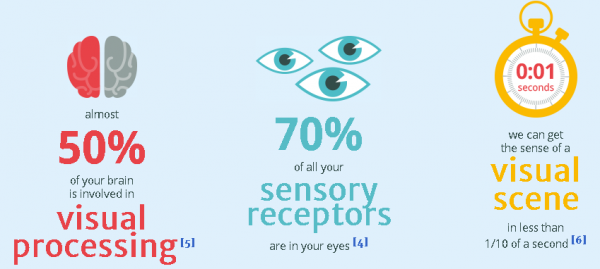
Merieb, E. N. & Hoehn, K. (2007). Human Anatomy & Physiology 7th Edition, Pearson International Edition.
Semetko, H. & Scammell, M. (2012). The SAGE Handbook of Political Communication, SAGE Publications.
With the scientific reasons from the above image, we are all hard-wired to understand visuals greater than anything else. The greater we understand, the more likely we are to share.
When you think about it, visual content is incredibly abundant and engaging. We have all shared something visual in our lives:
-
A photograph
-
A video
-
An illustration
-
Even an infographic
How to use in your marketing:
-
Is your blog post all text, no imagery? Break it up and include funny or associated images by using creative commons images from Flickr or Wikimedia Commons images.
-
Repurpose your content on SlideShare and create visual presentations to share.
Jonah Berger is a share scientist
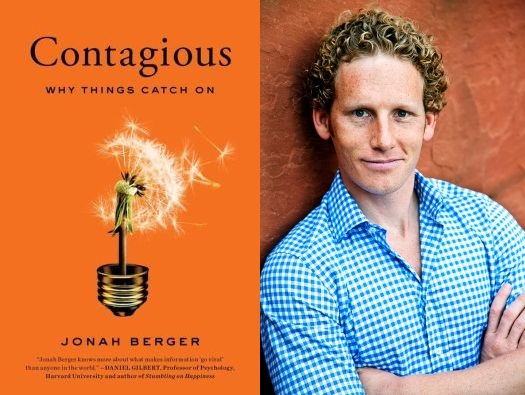
At this point, I'd like to introduce you to 'Contagious' by Jonah Berger. It's like a bible at NeoMam and we use it to analyse all of our ideas. Berger has determined six core reasons why people share. They are known as the STEPPS and I'll briefly explain them and any other scientific reasons in the following points.
2. People share things that make them look good
"...people prefer sharing things that make them seem entertaining rather than boring, clever rather than dumb, and hip rather than dull."
Social Currency.
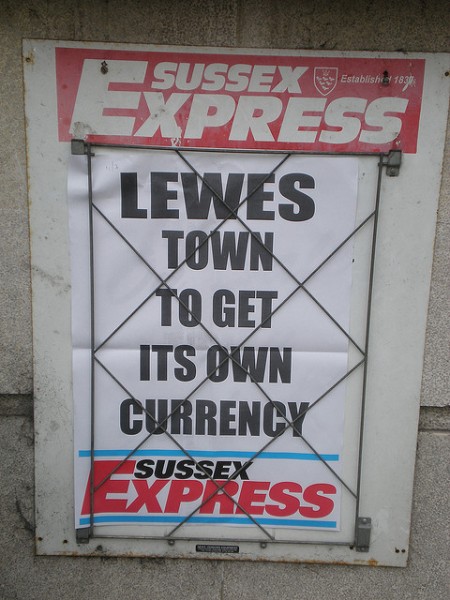
Photo by Stephanie Watson via Flickr
Social status is incredibly important and harks back to times when only the fittest and popular would survive. Subconsciously, we are constantly controlling this with what we do, and share. Social currency is the value we give to things that make us seem bright, funny, entertaining, knowledgeable, etc in the eyes of others; and therefore, we are more likely to mention those things that make us appear so.
How to use in your marketing:
-
Link your content to things that people care about, that gives them status and can show people they're cool. It could be a popular TV series (Game of Thrones) or even feeling proud to be part of a community like being a geek.
3. People share things that are remarkable
It goes without saying that sharing something remarkable will make you look good, but there is evidence that the more remarkable things get talked about more.
Berger studied articles from The New York Times and got people to rank them on how remarkable they were compared to how shared they were.
Here's my own (very brief) take on this research:
Most popular articles on The New York Times on 14th November 2013.
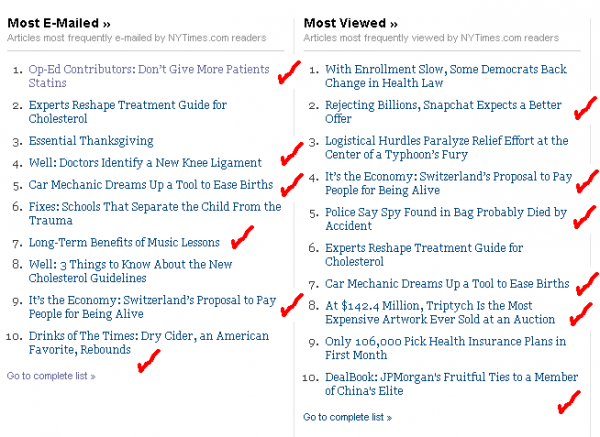
I've ticked which ones I found remarkable based solely on their title. You may disagree but it appears that remarkable content gets shared.
How to use in your marketing:
-
Identify the inner remarkability of a product, service or piece of content, and put it on display. Whats going to make people think wow?
Berger notes a great example of a company finding the remarkability of their product is Blendtec.
How can a blender be remarkable? Get it to blend iPhones!
4. People share things that are exclusive
Everyone loves to be told a secret or given exclusive information. To be trusted with information that no one else knows can make anyone feel special and powerful.
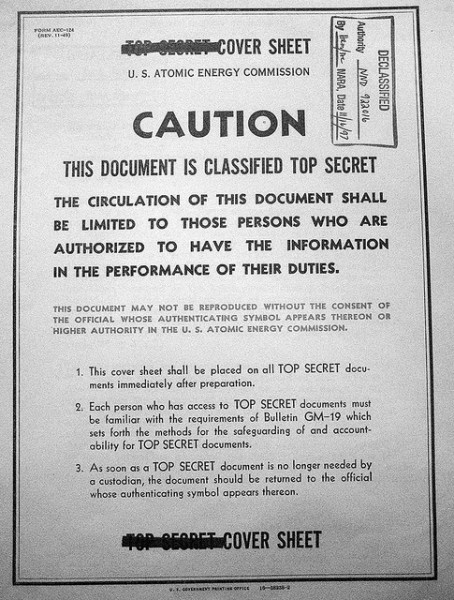
Photo by Restricted Data via Flickr
However, after the initial rush of being entrusted we realise that this power can make us look good to our friends if we share the information. After all, we'll be the only one able to tell them!
Berger explains how a bar in New York uses exclusivity to its advantage. Firstly, it has no signage and its only accessibly by a secret door (in an old phone booth) at the back of a hot dog restaurant. If you hadn't have been told about it, you wouldn't even know it existed. That being said: business is booming.
The bar doesnt run ads and relies on word of mouth (as well as being remarkable). Its success is down to it being a secret. But a secret that everyone can't refrain from talking about and sharing.
You have to be in the know to know about it; and of course, when you're in the know, you let others know (so they know you're in the know).
How to use in your marketing:
-
Make people feel like insiders, give your most influential followers and customers special status or something no one else has.
-
Encourage those in the know to spread the word. Have a discount code to send out via your exclusive email? Get them to pass it on and make it easy.
5. People share things when triggered to talk about them
Triggers are all around us, from word association to colours. People can be triggered to talk about certain things depending on their experiences, and it can be manipulated. We want people to talk about our product or service, so trigger them into talking about it! Berger uses the phrase: "Top of mind, tip of tongue."
An awesome example of a trigger is the awful Rebecca Black song 'Friday'. As you can see, search terms peaked every Friday in the first month of release.
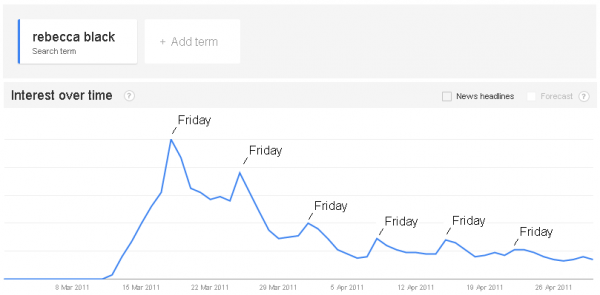
Okay, so triggers have more to do with word of mouth, but it's relevant because we share a lot of information online too: Twitter conversations, emails and reviews.
How to use in your marketing:
-
Triggers have the best effect when tied into branding, marketing and advertising campaigns. If you have the reach then think of something that people can link with your company and get them talking. This can be anything from a pink giraffe to a day of the week.
-
Having a unique and distinguishable logo is a great example of a trigger as when we see it we should immediately think of your company. Now all you have to do is associate your brand with something people want to talk about and share.
Take note that triggers can also be naturally diluted or become diluted. The colour red is a heavily diluted trigger e.g: Coke, Ferrari, McDonalds. The key is getting a trigger that can become synonymous with your company without any competition or confusion.
6. People share things that have the right type of emotion
Emotions range from positive to negative, and its great to make your content emotional, but there are in fact certain emotions that make people more likely to share.
For his book, Berger conducted research that went back to The New York Times most emailed list to judge the type of emotion each article evoked and if it aided sharing.
-
Awe-inspiring articles were 30% more likely to make the Most Emailed list
-
Sadder articles were actually 16% less likely to make the Most Emailed list
After much deliberation about the types of emotion, Berger noted that high-arousal emotions like awe and anger boosted sharing. Whereas low-arousal emotions like sadness and contentment lowered sharing.
Heres a chart to show which emotions are high or low arousing. As you can see, negative emotions can also be high-arousing.
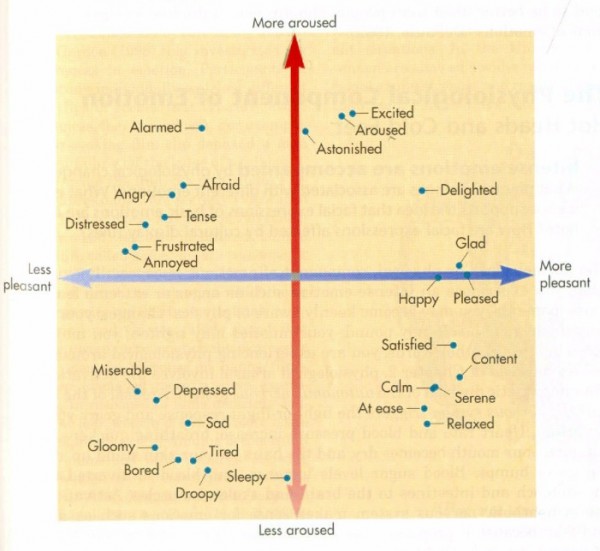
How to use in your marketing:
-
Try to spin low-arousal negative emotions ("3 Reasons Why I Suck and Don't Have A Girlfriend") into positive high-arousal ones ("50 Ways I Bettered Myself to Get A Girlfriend").
Rather than harping on about features or facts, we need to focus on feelings; the underlying emotions that motivate people to action.
7. People share things that give practical value
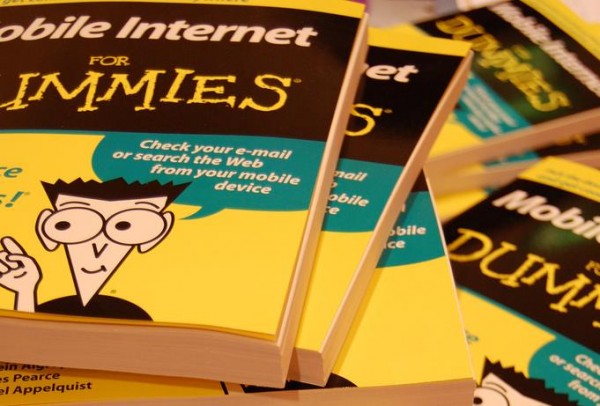
Photo by pestoverde via Flickr
Practical value is incredibly important in getting people to share. Thinking about it now, most content and blog posts nowadays have some practical value in it. Whether it's a list of tools or websites, even a how-to.
As mentioned before, we love to share things that make us look good in the eyes of others, but when we can help people too: sharing it is a no-brainer.
Sharing something that has practical value also strengthens social bonds and shows the people we are sharing with: we care!
How to use in your marketing:
-
Practical value can come in many forms. One of the easiest forms of practical value is a how-to and using your own or your company's knowledge. Think about what you have expertise in and see what your customers are having trouble with for your guide.
-
Practical value has to be easy to understand and get to the point. Berger argues that useful information should always be presented in a short, simple and straightforward way.
8. People share the things others are sharing
We've all heard the phrase: "Monkey see, monkey do". Humans find it easy to imitate others, whether its wearing similar clothes as your friends, talking about the same thing or sharing the same article. Berger explains this as: Public.
It takes the guesswork out and makes it easier. After all, if your friends like an article, that's a pretty good vouch and you should probably like it or share it too.
I came across an example of this on Facebook the other week. It was a quiz that showed you how northern you are. All my friends were taking the quiz, but how did I know this? They were posting their results on Facebook, made easy by a 'Share on Facebook' button at the end of the quiz.
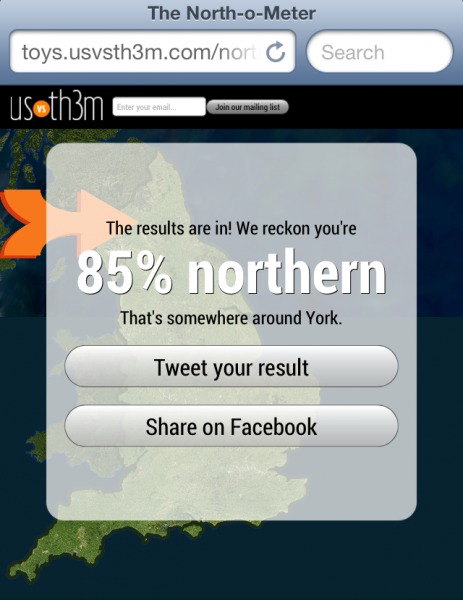
How to use in your marketing:
-
Make it easy for people to see that your content is being shared by installing social sharing buttons with counters. If it's visible that lots of people are sharing, they'll be more likely to imitate and share it themselves.
-
A bonus tip would be to include your twitter handle on everything. The more people that see your company's presence: the more public it is and the more they are likely to talk about and share your posts.
9. People share things that have a story

Photo by Paul Lowry via Flickr
The final point of Berger's STEPPS are Stories.
From the dawn of early human communication, we have used stories to communicate, engage, persuade and entertain. The story about how the hunter-gatherer wrestled the sabre-tooth tiger to win food for his tribe must have been exhilarating for the listeners as they adorned him with their attention. It also comes back to us telling stories to look good.
We all love a good story though and the great thing about them is that they can be adapted to any situation, product or cause. Berger tells us:
"Narratives are inherently more engrossing than basic facts If people get sucked in early, they'll stay for the conclusion."
We always try to base our infographics around a story or narrative that people can follow. If you can get someone to read to the end then they're more likely to have understood and enjoyed the piece enough to hopefully share it. A story also makes it easier to remember and talk about at a later date.
How to use in your marketing:
-
Use a story to make it easy for your audience to remember and share whatever it is you are explaining. Customer interviews and testimonials are easy forms of honest stories that could be shared.
-
A story also has to be interesting and link to the brand. The previous example of Blendtec blenders is configured in such a way that it's very hard to tell its story without mentioning the product itself.
10. People share things when its easy

Social share buttons have become a necessity to get your content shared.
Im not going to cite a particular study, but there are plenty out there that show the benefits of using these buttons for your content. And I think it makes sense.
People share things when they are: a) prompted and b) dont have to do much work.
Compared to copy and pasting the URL into your social media site of choice and writing a short description, then clicking a 'Tweet' or 'Share' button that is already filled out is so much easier.
As the uptake of these buttons on websites and blogs continues to grow, their presence will not only be required to aid sharing but expected by readers.
How to use in your marketing:
-
The number of social share buttons is astronomical and a quick search will list a lot of options for you to go with. Simply select what you'd like and add the code to your website. WordPress also has many plugins.
-
Try to limit the options you have and only include the big sites: Twitter, Facebook, G+, LinkedIn. If your content is particularly visual then Pinterest. Most sites now place these at the beginning and end of the content.
-
Be sure to fill out the pre-loaded information when your content is shared. For Twitter, this includes sticking to the 140 character limit, adding hashtags and your handle.
11. People share things that are funny

Photo by Chris Huggins via Flickr
Finally, and I know I haven't done a good job at this, but people share things that are humorous. I thought this was important enough to include separately to emotion.
What I found most interesting was this article on psychology today: The Science of Laughter.
The key points from it are:
-
"
[Laughter is] part of the universal human vocabulary, produced and recognized by people of all cultures." -
"Laughter is primarily a social vocalization that binds people together."
-
"Laughter was 30 times more frequent in social than solitary situations."
-
"Laughter is contagious."
-
"The presumed health benefits of laughter may be coincidental consequences of its primary goal: bringing people together."
Since humour, as well as sharing, is a social activity then its no wonder we share things that are funny. Again, we like to look good when sharing and by making someone laugh we increase our social status and strengthen the bond.
How to use in your marketing:
-
Creating some comical content is a great way to show the lighter side of your company or brand, and people will thank you for it by sharing.
-
Remember that not everyone is good at comedy so if you want to include your joke, please make sure it's actually funny!
And there you have it: 11 reasons that are kind of scientific about why we share things. A huge thank you to Jonah Berger and his book 'Contagious' for his insights and studies. Find out more at his website.
I'm sure there are a lot more reasons out there but it's a fascinating world of psychological theory. Do you have any crazy theories why we share things?
